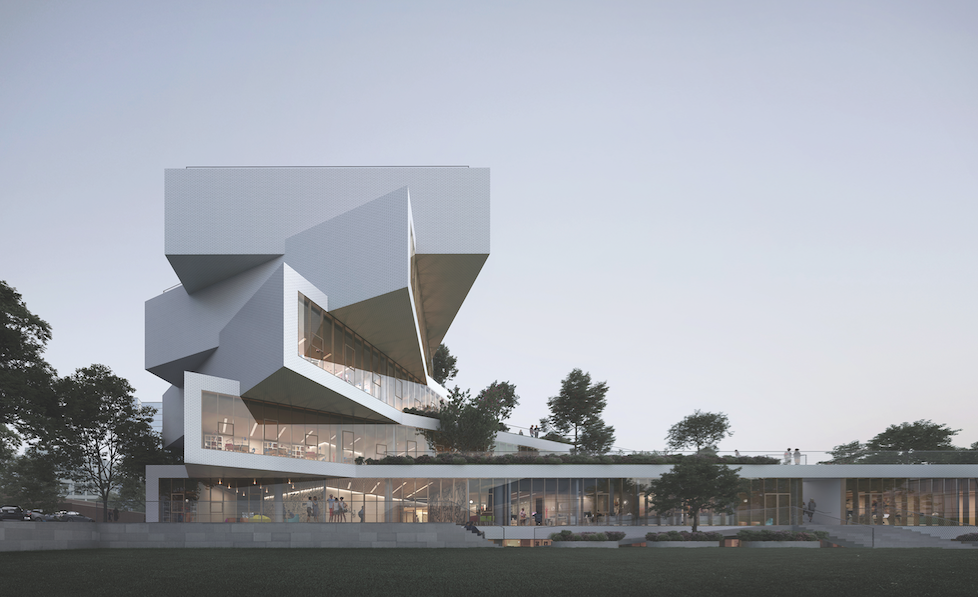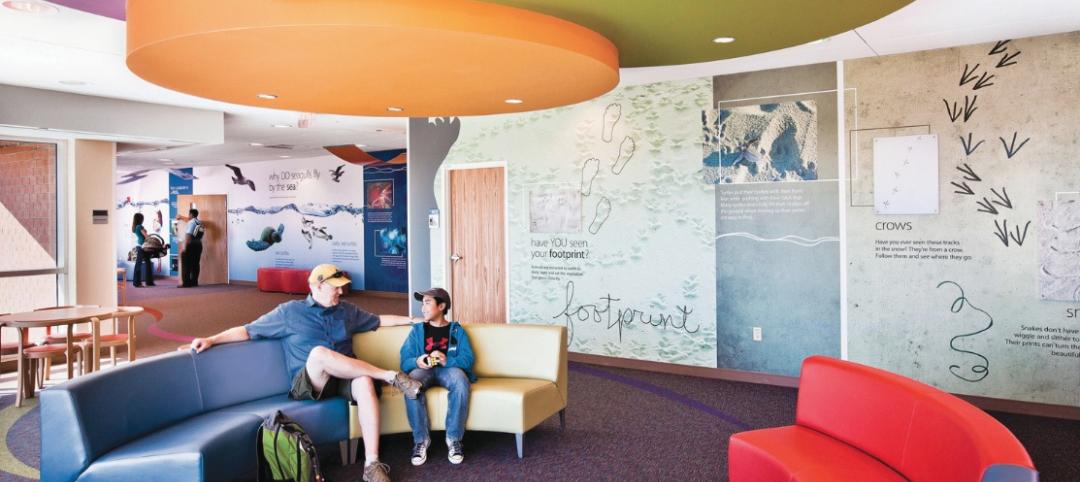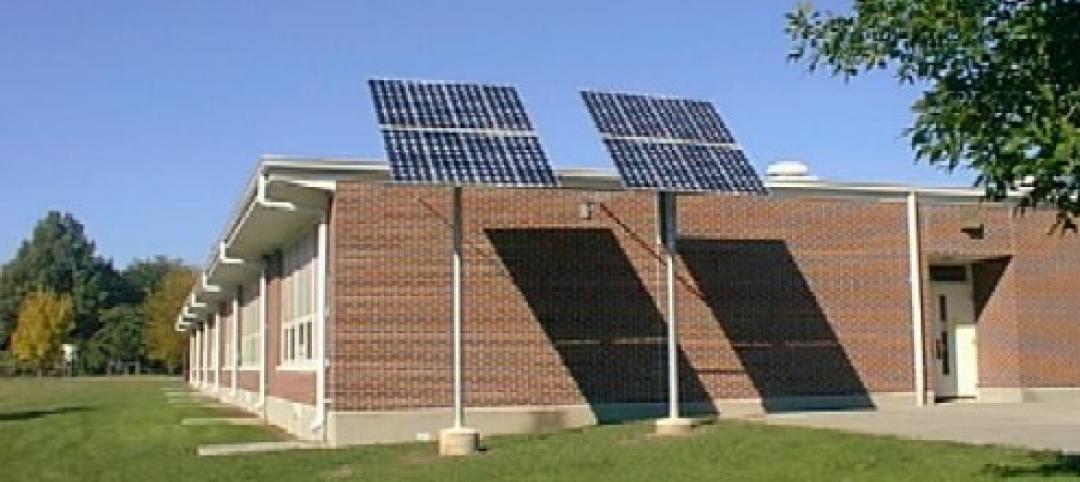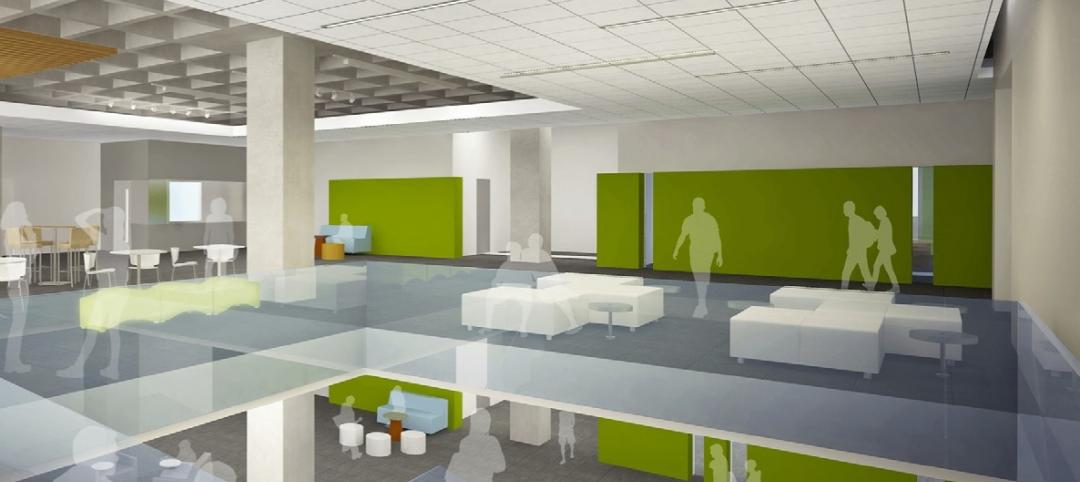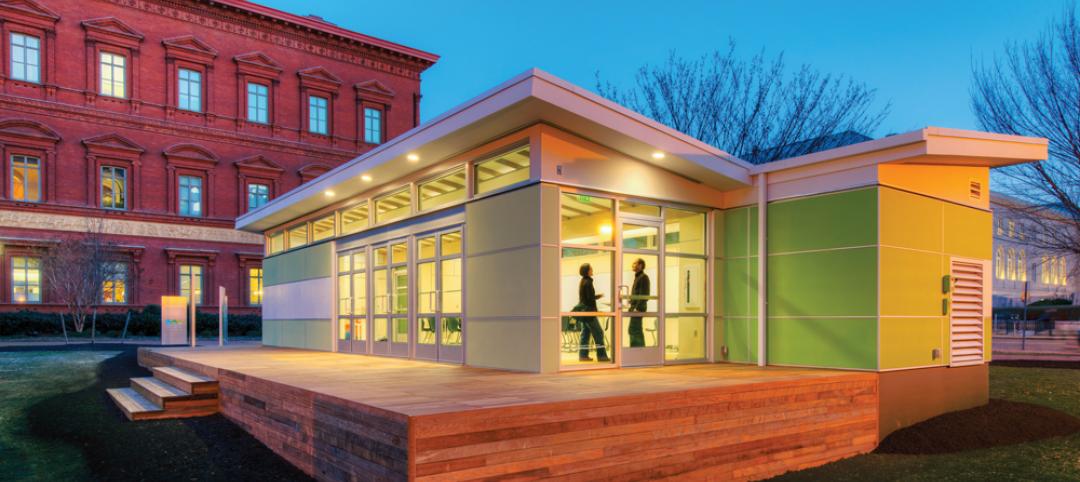Personalized learning tailored to the needs of individual students, coupled with group projects, is taking hold in the nation's schools. “We can’t just line up students in rows and teach everybody the same way, at the same pace,” says Leanne Meyer-Smith, AIA, LEED AP, VP of Architecture with Wight & Company. “That’s not working.”
In terms of school design, no single template has taken hold, but one thing is certain: long, double-loaded corridors are a thing of the past.
Improved economic conditions have freed up money for new projects and renovations. There’s a sense of urgency to update facilities to make up for the time lost when the Great Recession stymied many projects. “We’ve been seeing a lot more success with school funding referendums,” says Steve Herr, AIA, Director of Design, Fanning Howey.
See also: Top 150 K-12 Architecture + AE Firms - 2018 Giants 300 rankings
See also: Top 75 K-12 Engineering + EA Firms - 2018 Giants 300 rankings
See also: Top 90 K-12 Construction + CM Firms - 2018 Giants 300 rankings
Designing schools that can accommodate the pedagogy of today and the teaching styles of tomorrow is educated guesswork. “You have to allow for evolving instructional models without forcing tremendous expense to reconfigure spaces,” says Sean O’Donnell, FAIA, LEED AP, Principal and Practice Area Leader, Primary Education, with Perkins Eastman. Providing a little extra room and flexibility is crucial.
Extra space for learning and socializing can be created in common areas, where students can study and collaborate on projects in nooks and crannies around the school. “Interstitial spaces are really important,” says O’Donnell.
The building core at the Wilson School, a new 775-student high school under construction in Arlington, Va., will feature a wide staircase that opens out to the lobby, which will double as a gathering place for students. “We typically see that type of space in a university setting,” says Andrew Graham, AIA, Associate with Leo A Daly, the project’s design architect, along with Bjarke Ingels Group.
Even renovations of old double-loaded corridors can get at least part of the way to a modern design. Provided there's sufficient structural support in place, interior walls can be removed and track-mounted wall systems can be installed. “When you open up the walls, the corridor disappears and becomes a learning space,” says Lance Tritsch, LEED AP, Project Director, Pepper Construction.
Even when structural alterations are not possible, spaces can still be reconfigured at relatively low cost. “There’s a lot you can do with agile furniture,” says Meyer-Smith. Classrooms can be spruced up with new carpeting, plush pillows, and strategically placed bookshelves as dividers.
K-12 school designers are also using the increasing body of scientific evidence that links the interior environment to student performance as they pitch design ideas to district officials. Daylighting and indoor air quality are always on the front burner in these discussions.
Acoustic clarity within the classroom is also a major consideration. “If students can’t hear the teacher clearly, their ability to learn is impaired,” says Laura Wernick, FAIA, REFP, LEED AP, Senior Principal with HMFH Architects. Reducing noise is especially critical for children with ADHD, a condition exacerbated by excessive stimuli.
HMFH brings in experts at various stages of the project to measure and analyze classroom acoustics. This enables designers and contractors to identify noise problems early, before they get too expensive to fix, says Chin Lin, AIA, LEED AP, Senior Associate with HMFH.

Wilson School, Arlington, Va
Children with ADHD and other conditions that are made worse by excessive stimuli can benefit from the use of tunable LEDs, says Lin. “Dimming and providing warmer tones through lighting is calming,” he says. With color-tunable lighting currently costing about twice as much as standard lighting, schools are likely to use the more expensive options in special needs classrooms where they can do the most good.
The trend toward more hands-on learning remains strong. STEAM and STREAM (the “R” is for robotics) curricula often include maker spaces equipped with 3D printers. O’Donnell says “flight lounges"—areas adjacent to maker spaces, where teachers from different subject areas can get together to devise interdisciplinary teaching strategies and hands-on student projects—are coming into vogue.
getting students out into the world
High schools are also experimenting with giving students real-world business experience. The new Carmel (Ind.) High School has a 2,000-sf space for a student-run coffee shop and retail outlet featuring school-themed clothing and gear. Students perform all the managerial, accounting, marketing, graphics, and communication tasks to run the business. There's even a “Shark Tank,” where students can pitch ideas using whiteboards and high-end presentation tools.
A 30,000-sf space in a repurposed warehouse at the Brooklyn (N.Y.) Navy Yard is dedicated to the STEAM Center, where 11th and 12th graders from Brooklyn schools spend half of each day learning vocational and technical skills such as engineering, design, construction, film and media, and culinary arts.
“Students are introduced to companies in the Navy Yard and have the opportunity to participate in internships,” says Christine Schlendorf, AIA, Principal with Perkins Eastman.
Related Stories
| Sep 19, 2013
6 emerging energy-management glazing technologies
Phase-change materials, electrochromic glass, and building-integrated PVs are among the breakthrough glazing technologies that are taking energy performance to a new level.
| Sep 19, 2013
Roof renovation tips: Making the choice between overlayment and tear-off
When embarking upon a roofing renovation project, one of the first decisions for the Building Team is whether to tear off and replace the existing roof or to overlay the new roof right on top of the old one. Roofing experts offer guidance on making this assessment.
| Sep 16, 2013
Study analyzes effectiveness of reflective ceilings
Engineers at Brinjac quantify the illuminance and energy consumption levels achieved by increasing the ceiling’s light reflectance.
| Sep 11, 2013
BUILDINGChicago eShow Daily – Day 3 coverage
Day 3 coverage of the BUILDINGChicago/Greening the Heartland conference and expo, taking place this week at the Holiday Inn Chicago Mart Plaza.
| Sep 10, 2013
BUILDINGChicago eShow Daily – Day 2 coverage
The BD+C editorial team brings you this real-time coverage of day 2 of the BUILDINGChicago/Greening the Heartland conference and expo taking place this week at the Holiday Inn Chicago Mart Plaza.
| Sep 4, 2013
K-12 school design that pays off for students
More and more educators are being influenced by the Reggio Emilia approach to pedagogy, with its mantra of “environment as the third teacher”—an approach that gives Building Teams a responsibility to pay even closer attention to the special needs of today’s schools.
| Sep 3, 2013
'School in a box' project will place school in San Diego public library
Thinking outside the box, LPA Inc. is designing a school inside a box. With an emphasis on three E’s—Engage, Educate, and Empower—e3 Civic High is now being constructed on the sixth and seventh floors of a public library in downtown San Diego. Library patrons will be able to see into the school via glass elevators, but will not have physical access to the school.
| Aug 30, 2013
Modular classrooms gaining strength with school boards
With budget, space needs, and speed-to-market pressures bearing down on school districts, modular classroom assemblies are often a go-to solution.
| Aug 26, 2013
What you missed last week: Architecture billings up again; record year for hotel renovations; nation's most expensive real estate markets
BD+C's roundup of the top construction market news for the week of August 18 includes the latest architecture billings index from AIA and a BOMA study on the nation's most and least expensive commercial real estate markets.
| Aug 22, 2013
Energy-efficient glazing technology [AIA Course]
This course discuses the latest technological advances in glazing, which make possible ever more efficient enclosures with ever greater glazed area.


